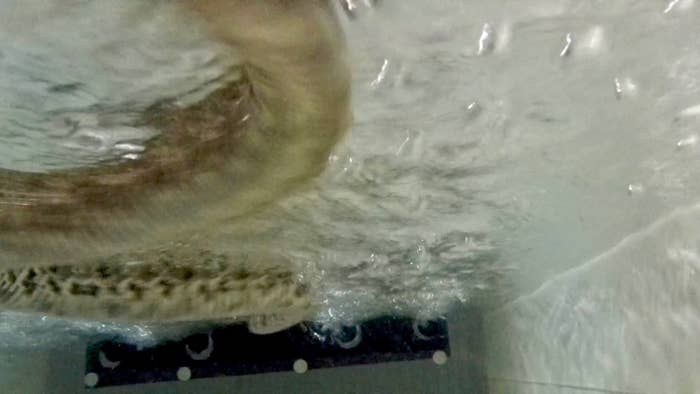
Melbourne Zoo has installed the world's first gym for reptiles in an effort to keep them in shape.
The gym is actually a two-metre-long tank with an adjustable jet stream system that keeps snakes swimming towards the end – effectively like a water-based treadmill.
Jon Birkett, the reptiles, invertebrates and education life sciences manager at Melbourne Zoo, began to think about the concept of a gym for reptiles when he started at the zoo in the 70s.
Birkett noticed that a lot of the most inactive breeds of snakes were dying with large fat deposits and tumours because they led extremely sedentary lifestyles.
"I've always wanted to be able to exercise them more, but the animal-to-keeper ratio of the reptile house back then was pretty high so we didn't really have the time to take our snakes for a walk, so to speak," he said.

Birkett said the hydro gym has been extremely successful so far and that while all snakes can swim naturally, they have to be taught gently how to do it, much like human children.
"Through gentle coaxing and training and conditioning of the animal, they learn that swimming is actually fun and that is one of the most rewarding things," he said.
The snakes appear to get a sense of pleasure from the exercise and Birkett believes it can strongly enrich their lives if they are able to regularly use the system; one large female eastern diamondback rattlesnake took a particular liking to it after being taught to swim.
"You could almost see it in her behaviour...she had the strength to be able to get out at any moment she wanted but she just stayed there swimming against the current and enjoying it," he said.
Melbourne zoo's reptile department will soon begin collating data on the hydro gym and its effectiveness in trimming down the snakes' body fat percentages, so that other zoos can see empirical evidence in favour of the reptile gym.
Birkett also said that he hopes the system can be adopted globally in zoos, not only with reptiles but within all tanks for animals that spend time in water, including tigers and otters.
"What we've built today is in my mind really a prototype for the future, it's really the first of its kind and where we go from here is really only limited by our imagination," he said.
